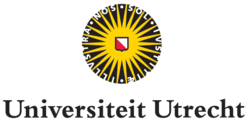
Utrecht Center for Quantitative Immunology
 |
Can KesmirTheoretical Biology and BioinformaticsFaculty of Sciences Utrecht University |
We apply these methods to:
MHC molecules do not only present peptides to T cells but they are also ligands for several Natural Killer (NK) cell receptors. Because of the abundant expression of MHC-I on many cells, NK cells remain silent to healthy tissue via the interactions with these receptors. But when cells have a decreased expression of MHC-I, which can occur during certain viral infections, they become target for NK cell killing. Some of the NK receptors show a fascinating evolutionary trade: they are polygenic and polymorphic. In the last years we developed a new research line studying the evolution of the polygenecity and polymorphism in these receptors.
Five key publications
- Tumor exome analysis reveals neoantigen-specific T-cell reactivity in an ipilimumab-responsive melanoma. van Rooij N, van Buuren MM, Philips D, Velds A, Toebes M, Heemskerk B, van Dijk LJ, Behjati S, Hilkmann H, El Atmioui D, Nieuwland M, Stratton MR, Kerkhoven RM, Kesmir C, Haanen JB, Kvistborg P, Schumacher TN. J Clin Oncol. 2013 Nov 10;31(32):e439-42. doi: 10.1200/JCO.2012.47.7521.
- Proteome sampling by the HLA class I antigen processing pathway. Hoof I, van Baarle D, Hildebrand WH, Kesmir C. PLoS Comput Biol. 2012;8(5):e1002517. doi: 10.1371/journal.pcbi.1002517.
- Degenerate T-cell recognition of peptides on MHC molecules creates large holes in the T-cell repertoire. Calis JJ, de Boer RJ, Kesmir C. PLoS Comput Biol. 2012;8(3):e1002412. doi: 10.1371/journal.pcbi.1002412.
- A comparative analysis of viral peptides presented by contemporary human and chimpanzee MHC class I molecules. van Deutekom HW, Hoof I, Bontrop RE, Kesmir C. J Immunol. 2011 Dec 1;187(11):5995-6001. doi: 10.4049/jimmunol.1102236.
- A comparative study of HLA binding affinity and ligand diversity: implications for generating immunodominant CD8+ T cell responses. Rao X, Costa AI, van Baarle D, Kesmir C. J Immunol. 2009 Feb 1;182(3):1526-32.
Members
Jose BorghansRob de Boer
Julia Drylewicz
Can Kesmir
Aridaman Pandit
Leila Perie
Kiki Tesselaar
Johannes Textor
Nienke Vrisekoop
Research
Epitope identificationLymphocyte dynamics
Lymphocyte migration
Relevance
More
UCQI homePhD students
Open positions/projects
Agenda
Publications (pubmed)


